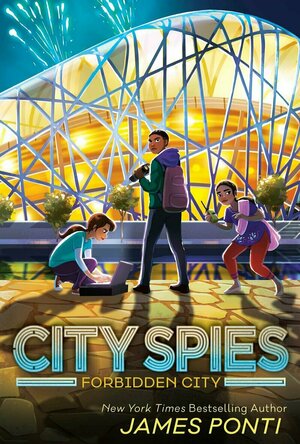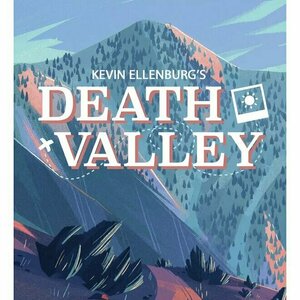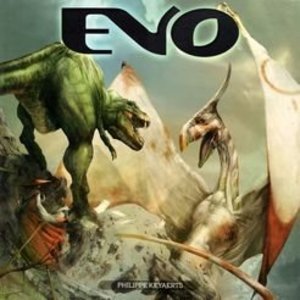
SoccerMeter for iPad
Sports
App
Possession, passing, shooting, and scoring game statistics for soccer games at any level. ...
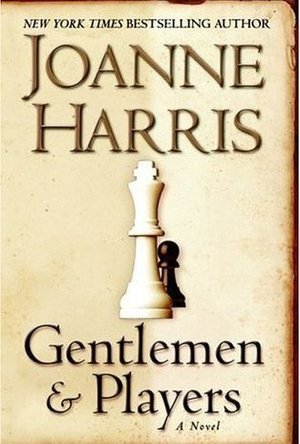
Gentleman and Players
Book
Audere, agere, auferre. To dare, to strive, to conquer. For generations, privileged young men have...
Mark @ Carstairs Considers (2464 KP) rated Forbidden City in Books
Mar 2, 2022 (Updated Mar 2, 2022)
Having enjoyed the first two in this series, I was looking forward to this book, and I wasn’t disappointed. This book is Paris’s time to shine, but all the other characters get their own smaller moments, and I continue to love their relationships. We get some surprising advancement on one series plot thread, although others are only mentioned in passing. I do feel like the other books in the series had a bit more action, but with all the angles the teams uses to approach their mission, I was never bored. We get a few laughs along the way, and even when we aren’t laughing, it’s just fun to be around the characters. Fans will enjoy this latest book. I’m already looking forward to their next mission.
Purple Phoenix Games (2266 KP) rated Death Valley in Tabletop Games
Jan 18, 2022
Death Valley is a game for 1-2 players in which you are documenting your journey across the Death Valley park. You will see different sights on your journey, and add cherished memories to your scrapbook. The player who amasses the most points by the end of the game is the winner! To setup for a game, shuffle the deck of Feature cards and reveal one face-up while the rest remain in a face-down deck. These cards make up the Desert. That’s it. The game is ready to start! Choose a starting player and get to sight-seeing!
Throughout the game, players will be adding Feature cards to their Journey tableau (places they have visited) and their Scrapbook tableau (the more memorable locations). On your turn, you will perform one of 2 actions: Travel or Rest. When you choose to Travel, you will select either the Feature card from the Desert (the face-up card), or draw the top card from the face-down deck and add it to your Journey. Conversely, when you choose to Rest, you will move a Feature card from your Journey into your Scrapbook. When moving Feature cards to your Scrapbook, you are allowed to hide other cards from your Journey underneath that card. Hiding cards can be beneficial for end-game points, or for preventing you from Busting. Many Feature cards have additional text at the bottom, that either provides ongoing abilities for the remainder of the game, or that provide extra scoring abilities at the end of the game. Choosing which Feature cards to move when and where is key!
After you have performed your chosen Action, you check to see if you Bust. If you have 3 Feature cards of the same type in your Journey and Scrapbook, you Bust! To resolve a Bust, you will discard from the game the right-most card in your Journey, and then will re-shuffle any remaining Journey cards back into the draw deck. So there’s a small element of push-your-luck in here! Once you resolve a Bust (if necessary), you will refresh the Desert – reveal a new face-up card if you just took the face-up card this turn. Your turn then ends, and play moves to your opponent. The game continues in this fashion, with players drawing/placing/moving Feature cards in their 2 tableaus, until only 1 card remains in the Desert. Points are then tallied: 1 point per Star on cards visible in your Journey, and points based on the extra scoring abilities of cards in your Journey and/or Scrapbook. The player with the highest score is declared the winner!
So, let’s get into this gameplay. For being a 2-player game, I appreciate that it’s not necessarily directly competitive. Yes, you want to score more points at the end of the game, but there really isn’t any player interaction, which keeps the energy level of the game more low-key. That being said, it’s decently strategic. Some Feature cards provide on-going abilities that can be used throughout the game, and can help you get some benefit out of a Bust. Certain card abilities rely on adjacency of other cards, so you have to know when/where to place a card to get the most points for the end of the game. That being said, you also have to make sure you don’t Bust. Luckily, you don’t resolve/check for a Bust until after you have performed your action, so perhaps you are able to sneak by with some clever planning. One part of the gameplay that misses the mark for me is the fact that you can only perform 1 Action per turn. I feel like that can really inhibit your ability to strategize, and makes it difficult to feel like you’re accomplishing something on your turns. Maybe if players had to perform both Actions per turn (either Travel/Rest, or vice versa), it would offer a few more options in terms of strategy. I just personally feel like taking only 1 Action per turn makes the gameplay a little too choppy, and makes it hard to really get into – especially when the game itself is so short. Maybe I’m not thinking strategically enough, but these are my thoughts thus far with Death Valley!
Components. As to be expected from ButtonShy – excellent quality of the cards and wallet. The artwork is colorful and thematic, and I just like looking at the different locations represented in the game. This game is satisfying to look at, and it earns high marks from me. Another neat thing? Each Feature card has a little interesting fact about its location, so you can learn a neat tidbit while playing the game!
Nothing can really compare to seeing Death Valley in person, but this game does offer a nice representation. The beauty of the location artwork coupled with the interesting facts has me intrigued outside of the game itself. The gameplay isn’t necessarily a home-run in my eyes, but it is strategic enough that I know I’ll keep pulling this one out from time to time. There is a solo mode, as well as a variant to give you more of a press-your-luck element, and I will definitely be trying those to see if they change my thoughts on this game. But for the time being, Purple Phoenix Games gives Death Valley a singed 4 / 6.
Purple Phoenix Games (2266 KP) rated Evo (second edition) in Tabletop Games
Oct 11, 2019
Evo pits its players against one another in a clash to populate an island too small for everyone to enjoy harmoniously. It’s a… Small (dino) World, if you will. By improving your clan’s dinosaurs, survivability, and vigor you may be able to establish the most prosperous clan. At least until the meteor hits and wipes everyone off the face of the island anyway…
DISCLAIMER: We do not intend to cover every single rule included in the rule book, but will describe the overall game flow and major rule set so that our readers may get a sense of how the game plays. For more in depth rules, you may purchase a copy online or from your FLGS. -T
Evo is played over several phases over several turns. Exactly how many turns is unknown because the end game is denoted by a randomized meteor token. To setup Evo shuffle the meteor token into the bottom few climate rotation tokens and set them as a stack face down. These will be the round trackers and also will dictate how the climate may change from round to round. Set the climate wheel on the starting space and within view of the players. Shuffle the event cards and place them face down near the enhancement bid board. Give each player the mat, dinomeeples (yay I got one that makes sense!), and bidding totem of their chosen color. Lay the correct map for the amount of players on the table and have each player place their dinomeeples on the corresponding starting spaces on the map. Give each player their starting money (in VP chips). Determine the starting initiative order and place the totems on the bid board in that order. Set aside the combat die and you are finally ready to play!
The first phase of the game is Climate. (after the first round) A new climate token will be revealed which directs the players to adjust the climate wheel or keep it status quo. The climate wheel determines which spaces on the map will have cold, hot, Death-Valley-type, or safe climates for dinos to live on. This is known information at the beginning of the round so the players can plan out the rest of the round to keep their dinos safe before the culling.
The next phase is bidding on enhancements. Draw from the bag enough tokens for the players to quarrel over and place them randomly on the bid board. In initiative order players will bid on enhancements using their VP chips. When a player is outbid for an item they must place their bid totem on another item. Once all players are winning bids on items they pay the supply for their winnings and add it to their mat in the appropriate slots. These could include items to help a dino survive the cold, increase their attack potential, give their dinos more movement (or walks, as we call them), and other special abilities.
Now that the players are enhanced a bit more, their dinosaurs can move on the map. This may be necessary for some, but not all, depending on how they have enhanced their dino clans. A dino can move as many spaces as feet are shown on the player’s board, or the total movement can be split by multiple dinos. The more feet, the more movement. If, during the movement phase, a dino wishes to enter a space currently inhabited by a rival clan’s dinomeeple a combat will occur. Combat is determined by comparing horns and defenses and the roll of the combat die.
Once movement is over, it’s time for the dinos to get saucy – it’s baby-making time! I mean, it’s reproduction time! That’s not appropriate either. You can create one more dinomeeple to place on the map adjacent to another dino. This is how you may expand your empire of cute dinomeeples.
Once these phases are complete the players will consult the climate wheel to see which of their dinos are safe from elimination. For those dinos that are safe a player will earn 1 VP. Play continues in this fashion until the round that the meteor token is flipped from the stack of climate tokens that typically start a round. As the meteor destroys all dinomeeples on the map players will total their VPs and the winner is the clan leader with the most VP at game’s end.
Components. There are a LOT of components in this box. One of the best components in the game is the well-designed box insert. As you unpack the game you can really just setup right out of the box. The maps, bidding board, and climate wheel are normal-style game boards and of good quality. The cards are OK and get the job done. The die is a painted wooden die and it’s fun to roll. The climate tokens, VPs, and enhancement chips are all thick cardboard. The play mats are a matte cardstock (and that’s fine because it just holds your components). The other components are the cloth bag for enhancement draws and those cutie little dinomeeples! Everything is really well-produced and has held up really well for us. My only minor minor complaint is that I wish the dinomeeples were a different shape per color, but everyone having brontosauri is fine with me too. The art. The art is SPECTACULAR on this one. Seriously really great artwork. The cards, the boards, the playmats, the enhancements. Everything looks just amazing.
I kinda already let you know that I love this game. So I am not going to wax poetic here and go into some long analyses of why I love it. It is a more-involved Small World (I hope you caught that shameless reference in the intro) that uses dinosaurs instead of fantasy race/class combos. You know Evo is great when you can compare it to an already-great game from the same designer. I also think you could play Evo and Small World back-to-back and have an enjoyable experience. They are similar, but offer a different experience FOR SURE. I know this one is tough to find nowadays, but please, if you see it for sale in the wild PICK IT UP. It’s a great game that will offer years and years of play for you and your game group. Purple Phoenix Games gives this one a prehistoric 16+ / 18. I say “plus” because I may change it to a 6 in the future. It’s that good.
Purple Phoenix Games (2266 KP) rated No Thanks! in Tabletop Games
Jan 6, 2020
Usually in my intros I like throw a little flavor that matches the theme of the game. Well, I just couldn’t think of anything so you get the shortest intro I have done to date. No Thanks! is a great card game of push your luck. Period. I’ll tell you all the rules here since this mighty game may be bypassed in stores as it looks very unassuming and bland.
You are trying to get the least amount of points in a very nontraditional way. In the deck are cards numbered 3-35. You shuffle them all up and randomly eject from the game 9 cards. Nobody will know which 9. Why does that matter? Well, you score points (which is bad) equal to the lowest number of all your runs of cards. So a run of 3-4-5-6 scores 3 points because 3 is the lowest card. However, if 5 was one of the ejected cards and you had 3-4 and 6, you total would be 9 (3 from the first run and 6 from the next run since there wasn’t a 5 to connect them).
How do you get these cards? Well, on your turn you flip over a card from the face-down stack. Decide if you want to take that card into your tableau or if you would like to pass. If passing, you plop a red chip on it (of the 11 you were given at setup) and offer it to the next player. They can take the card along with the chip, or add a chip of their own. The offer now goes to the next player who does the same. Whomever ends up with the card also collects all the chips to be used on future cards.
This doesn’t really sound all that fun does it? Well it most certainly IS fun once you give it a go! Especially when you’re trying to decide if you should just take the 15 because you already have a run of 12-13-14 and it would be worth zero points, but you are also running low on chips. Let it ride around the table a couple times and get those chips! But beware of your opponents who will take the card out of spite and now you can’t connect your runs and you are low on chips. Uh oh Daddy-O!
This game is great with all player counts, and with all ages who can understand the math behind their choices. That’s why we at Purple Phoenix Games authorize a non-themed score of 8 / 12.
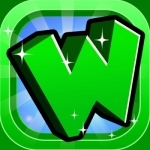
Word Chums!
Games, Entertainment and Stickers
App
More fun than Words With Friends and more addicting than Scrabble, WORD CHUMS: the highest rated...

LG TV Media Player HD
Entertainment and Photo & Video
App
>> Only download this app if you own an LG TV from 2011 or later with Smart TV capabilities. Just...

Listen: The Gesture Music Player
Music and Entertainment
App
A music player you can use without looking at it. Works seamlessly with Apple Music, iPad...

LG TV Media Player
Entertainment and Photo & Video
App
>> Only download this app if you own an LG TV from 2011 or later with Smart TV capabilities. Just...
